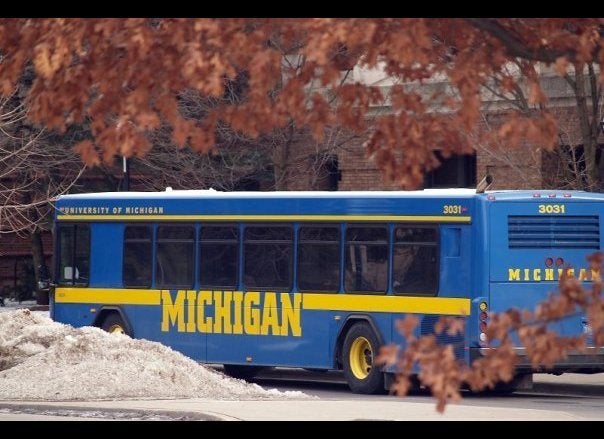
Aaron Calafato was a trained actor living in New York, planning a wedding, when the economy collapsed in 2008. His soon-to-be wife lost her job as a social worker in New Jersey shortly after that, and they were forced to move to Cleveland, Ohio, where they had family in the area and a better shot at finding work.
And their combined $120,000 in student loan debt went with them.
Calafato took a job at a for-profit college (which he declined to name) for the health insurance and so he could make the monthly $1,500 payments on his loans. Then, Calafato said, he "realized the sort of predatory rhetoric" he was using to get students to enroll with his employer was "putting them into obscene amounts of debt" in order for him to pay off his own.
"I was morally challenged by some of the things I was asked to do there," he told HuffPost. Calafato was let go for not recruiting enough students, and he began writing a play, which became the show "For-Profit: Witness the Exploitation of the American Student."
The show began to gain traction. Now 29-year-old Calafato is working with the Student Debt Crisis campaign as its artistic coordinator. Student Debt Crisis is trying to persuade politicians to address the growing mountain of debt under which college grads are often buried.
For-profit colleges have been under increasing media and government scrutiny. The Government Accountability Office found in a 2010 investigation of for-profit colleges that they were often using deceptive marketing practices, and federal investigations determined they targeted low-income students. For nearly every new regulation proposed by the Obama administration to rein in for-profit colleges, the industry has attempted to fight back through court filings and intense lobbying of Congress. All while collecting $32 billion from the federal government through programs like Pell Grants, according to a Senate investigation.
But instead of relying on statistical and procedural evidence and more to make his case, Calafato wrote a play.
"Because there's so much information, we've kind of grown numb to it," Calafato explained. "We're trying to take these numbers and give it a human face, give it a human perspective."
For a nonprofit organization like Student Debt Crisis, having an artistic coordinator with his own touring play may seem unusual, but Calafato believes such a tactic can actually be more effective. As a constituency of college students and millennials who don't have well-paid lobbyists, Calafato said they have to find innovative ways to be heard, and that it doesn't cost them that much to produce the play.
"The reason why I went into performing was to tell stories and tell truthful stories," Calafato said. "The Internet and technology is a great equalizer." He said that he's noticed a lot of other activists coming up with innovative ways to be heard with little funding.
When regular demonstrations against tuition hikes got be passé, some student activists staged "Night of the Living Debt" zombie protests, and held "funerals" for the "death of public education."
Last year, the Occupy Wall Street protests employed a form of protest rooted in simply camping out, or occupying, various locations in cities around the world. Internet sites like Twitter and U-Stream provided essential platforms for organizing and communicating, and many of the ad hoc leaders were millennials. Out of that movement came Occupy Colleges and the rebirth of Students for a Democratic Society.
Natalia Abrams worked with those groups, and now she's working with the Student Debt Crisis campaign, along with Calafato. Abrams, who graduated from the University of California, Los Angeles, in 2009, said Student Debt Crisis is working to raise $100,000 to lobby Congress on the subject of student debt.
"Until we get money out of politics, we're not really going to see a lot of changes in the student debt situation," Abrams said.
While their group has set a target of $100,000, the for-profit industry has spent nearly $40 million since 2007 to stop regulations designed to increase disclosures and to prevent students from taking on excessive debt. Those lobbying efforts don't include money spent by financial institutions that offer private student loans, such as Wells Fargo, Sallie Mae, Discover and Chase. Wells Fargo alone has spent $19 million on lobbying since Barack Obama became president, according to a HuffPost analysis. Sallie Mae has spent $12 million during that same time period.
"It's really hard to get senators and congressman to vote against their financial interests," Abrams said, adding that she's not surprised Congress isn't more active in addressing student debt.
Two million people signed an online petition to support Michigan Congressman Hansen Clarke's bill to relieve student loan debt. However, the bill hasn't gone anywhere in the House, and Clarke recently lost a primary battle.
"A lot of students and millennials are feeling completely hopeless -- they feel stuck," Abrams said. She added that Occupy gives them one outlet. And that while it's important to have "heat on the street," she said nothing will be accomplished without getting political traction as well.

